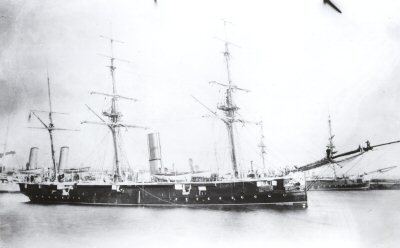Name Satellite-class sloops In commission 1883–1947 | Built 1883–1888 | |
 | ||
Builders Devonport DockyardSheerness Dockyard Cost £62,900 (Satellite) - £71,000 (Caroline)(approx £5.28 million at 2008 prices) | ||
The Satellite class was a class of 12-gun composite sloops built for the Royal Navy between 1883 and 1888, and reclassified as corvettes in 1884.
Contents
Design
Designed by Nathaniel Barnaby, the Royal Navy Director of Naval Construction, the hull was of composite construction; that is, iron keel, frames, stem and stern posts with wooden planking. This class of composite sloops was unique in having an internal steel deck over the machinery and magazines for protection. The Satellite class were reclassified as corvettes in 1884, and no more composite or wooden corvettes were built - in fact, Pylades was the last corvette built for the Royal Navy until the Second World War.
Propulsion
Propulsion was provided by a horizontal compound expansion of 1,400 indicated horsepower (1,044 kW) driving a single screw.
Sail plan
All the ships of the class were built with a barque rig.
Armament
The class was designed with two 6-inch/100-pounder (81cwt) breech loaders and ten 5-inch/50-pounder (38cwt) breech loaders, plus a single light gun and four (or more) machine guns. Heroine, Hyacinth and Royalist were built with eight 6-inch/100-pounder (81cwt) breech loaders in place of the 5-inch/6-inch mixture, and Satellite was converted to the same fit.
Operational lives
These ships were designed to patrol the far-flung reaches of Britain's maritime empire, and so Rapid and Royalist both went to the Australian Station, Satellite to the Pacific Station, Pylades to the North America and West Indies Station and Heroine, Caroline and Hyacinth all to the China Station.
